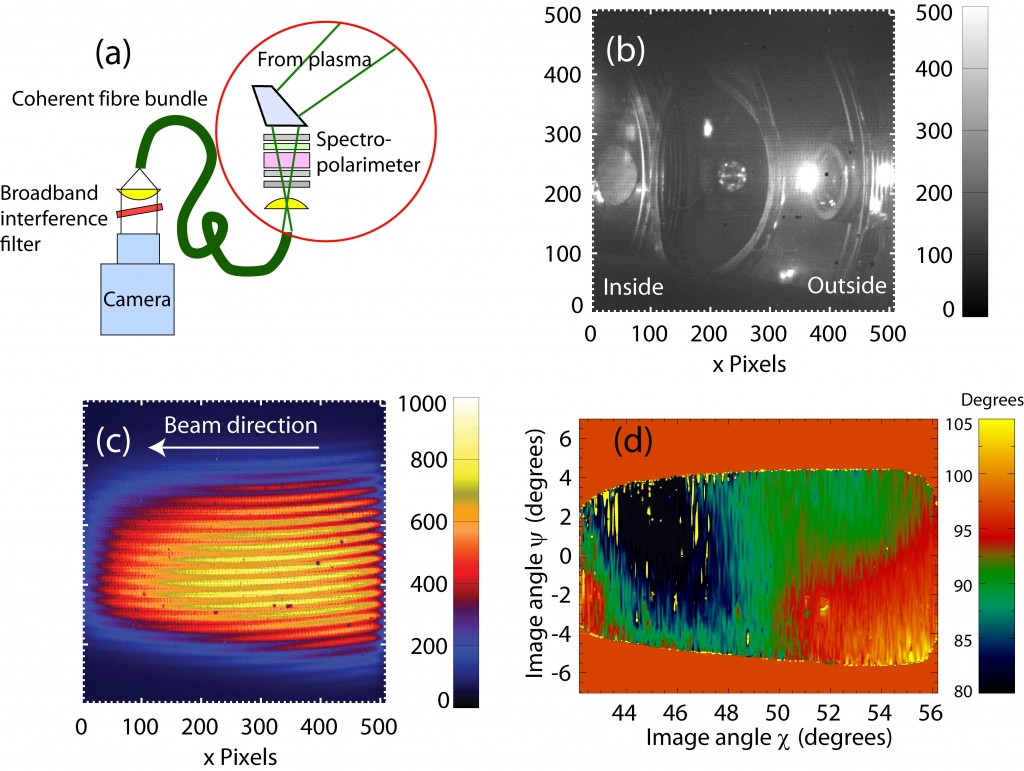ITER NEWSLINE
79
Fusion down under
Barry Green (Australian National University) with Matthew Hole, Boyd Blackwell and John Howard

Fisheye view of H-1 from above. H-1 is the National Plasma Fusion Research Facility located at the Australian National University's Research School of Physics and Engineering. H-1 is a 3-period heliac type of stellarator (i.e., one with a helical magnetic axis) with a major radius of 1 m and a mean minor radius in the range 0.15 - 0.2 m. Its design makes it a highly flexible experimental apparatus.

The ANU has pioneered new techniques in plasma imaging spectro-polarimetry. The figure illustrates a new optical system for imaging motional Stark effect polarimetry that was recently tested on the TEXTOR tokamak in Germany. The new system is capable of delivering, for the first time, 2D measurements of the internal toroidal current distribution in a tokamak. (a) Schematic layout of the imaging system; (b) an image of the interior of the TEXTOR tokamak obtained using the imaging system; (c) an image of the Doppler shifted neutral beam Stark multiplet emission. The phase of the spatial fringe pattern encodes the Stark multiplet polarization angle; (d) The demodulated fringe phase (related to the magnetic field pitch angle).
While there has also been recent growth in international program participation, Australia is not yet formally part of the ITER Project. In 2004, a group of Australian fusion scientists and engineers in various organizations and universities formed the Australian ITER Forum, with the goal of achieving Australian participation in the ITER program.
Subsequently, the ITER Forum, with Government support, met with representatives of the ITER Members at a workshop called "Towards an Australian involvement in ITER" in Sydney, in October 2006. Post-workshop, the Forum conducted a strategic planning exercise to outline a participation route to ITER and develop a sustainable domestic capability for fusion demonstration reactor (DEMO) timescales. The strategic plan, which was released in August 2007 and now has widespread institutional support, proposed an Australian contribution of an ITER subsystem, strategic fellowships, and enabling research infrastructure upgrades. Australia has not only scientific and technological expertise to offer the ITER Project, with the ability to train more, but also the backing of specialist industrial firms, and raw materials of fusion relevance, namely for lithium, vanadium and for niobium superconductors.
Most recently (February 2009), two representatives of the ITER Organization visited Canberra for discussions concerning some plasma diagnostics for ITER which have been identified as necessary, but are, as yet, uncredited.
return to Newsline #79



